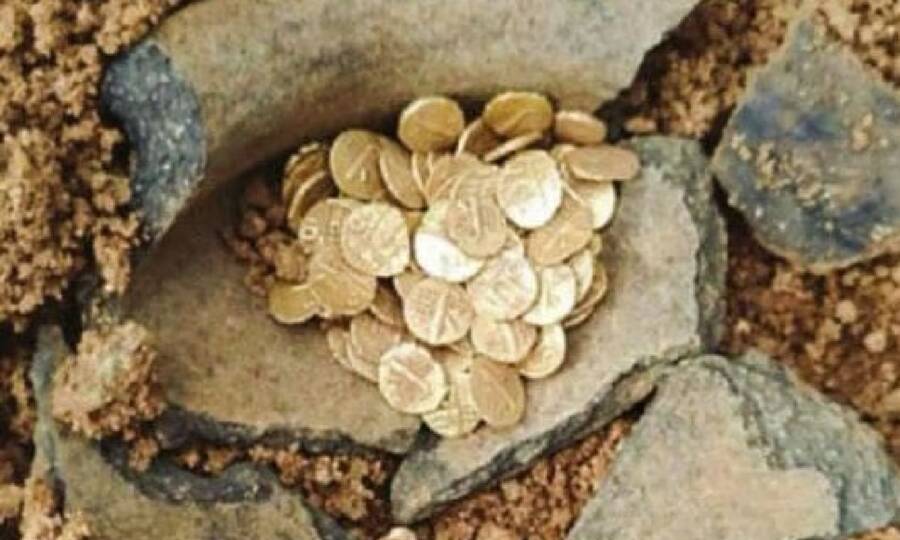“Unearthed Secrets: The Shocking Discovery of Pharaoh Thutmose II’s Hidden Tomb Near Luxor!”
What would you do if you stumbled upon the ancient resting place of a pharaoh, complete with all the spooky tales that come along with it? Well, that’s exactly what a team of intrepid archaeologists unearthed in 2022 when they bravely navigated the dusty expanse of Wadi Gabbanat el-Qurud. Their discovery of the long-lost tomb of Pharaoh Thutmose II, who had his reign cut short in 1479 B.C.E., is drumming up excitement akin to finding a hidden treasure map! Despite his body being found way back in 1881, it wasn’t until now that his original burial site has come to light, proving that sometimes the past can be a little coy. This revelation not only deepens our understanding of Thutmose II’s legacy but has also been hailed as one of the most thrilling archaeological feats in recent memory! Buckle up, because we’re about to dive into the mysteries and marvels surrounding this incredible find! LEARN MORE.
A tomb unearthed in Wadi Gabbanat el-Qurud in 2022 has been determined to be the original resting place of Pharaoh Thutmose II, whose reign ended with his death in 1479 B.C.E.

Wikimedia CommonsThe mummified head of King Thutmose II. His body was found in the late 19th century, but not in its original tomb, which has only now been identified.
Archaeologists in Egypt recently announced the discovery of the long-lost tomb of King Thutmose II — the first royal burial chamber to be unearthed since Howard Carter found the tomb of King Tutankhamun in 1922.
Although Thutmose II’s body was discovered back in 1881, it was not found in the tomb that was originally built for the late king. As the new discovery shows, Thutmose II’s original tomb was left in a poor state of preservation due to flooding soon after his death, and most of the original contents, including the king’s body, were moved to another location at some point long ago.
In fact, it was because of this that researchers initially believed the newly-found tomb might have belonged to the wife of an ancient king, as opposed to a pharaoh himself. But now, with the tomb’s true purpose uncovered, the discovery is being touted as “one of the most important archaeological breakthroughs in recent years.”
The Discovery And Identification Of Thutmose II’s Tomb

Egyptian Ministry of Antiquities and TourismThe interior of King Thutmose II’s original tomb.
In 2022, Egyptian and British archaeologists found the entrance and main passage of a tomb just a few miles west of Luxor near the Valley of the Kings. They spent two years excavating the tomb, dubbed No. C4 at the time, operating under the initial assumption that it may have belonged to an ancient king’s wife.
But, according to a statement made by Egypt’s Ministry of Tourism and Antiquities, the team soon found evidence linking the tomb directly to King Thutmose II.
Specifically, the tomb contained alabaster vessels that featured inscriptions referring to Thutmose II as the “deceased king,” as well as the name of his principal wife and half-sister, Queen Hatshepsut. Archaeologists also found sections of the Book of Amduat, a religious text associated with Egyptian royal tombs, as well as bits of plaster painted blue and adorned with yellow star motifs, likewise associated with royal tombs.
Mohamed Ismail Khaled, the secretary-general of Egypt’s Supreme Council of Antiquities, said the find is “one of the most important archaeological breakthroughs in recent years.”
“The artifacts found within the tomb provide critical insights into the history of the region and the reign of Thutmose II. Notably, this discovery includes funerary furniture belonging to the king, marking the first-ever find of such items, as no funerary furniture of Thutmose II exists in museums worldwide,” he continued.

Egyptian Ministry of Antiquities and TourismVarious artifacts recovered from the tomb, with inscriptions referring to Thutmose II as the “deceased king.”
Mohamed Abdel Badi, head of the Egyptian Antiquities Sector and co-leader of the excavation, noted that the tomb was found in a poor state of preservation due to flooding that occurred shortly after the death of Thutmose II.
“Water inundated the tomb, damaging its interior and necessitating extensive restoration work by the archaeological team to recover fallen plaster fragments,” he said. “Preliminary studies suggest that the tomb’s original contents were relocated to another site during ancient times after the flooding.”
Given that Thutmose II’s body was discovered in a different location, at an archaeological site known as the Deir el-Bahari Cachette, Badi’s theory seems likely. As for how the tomb’s contents were moved, Dr. Piers Latherland, head of the British side of the mission, offered an explanation.

Egyptian Ministry of Antiquities and TourismWater damage and recovered plaster bits in the tomb.
Latherland noted that the tomb’s simple layout was something of a prototype for later royal tombs of the 18th Dynasty: “It features a plastered corridor leading to the burial chamber, with the floor of the corridor elevated approximately 1.4 meters (4.59 feet) above the burial chamber’s floor. The elevated corridor is believed to have been used to relocate the tomb’s contents, including the mummy of Thutmose II, following the flooding.”



















